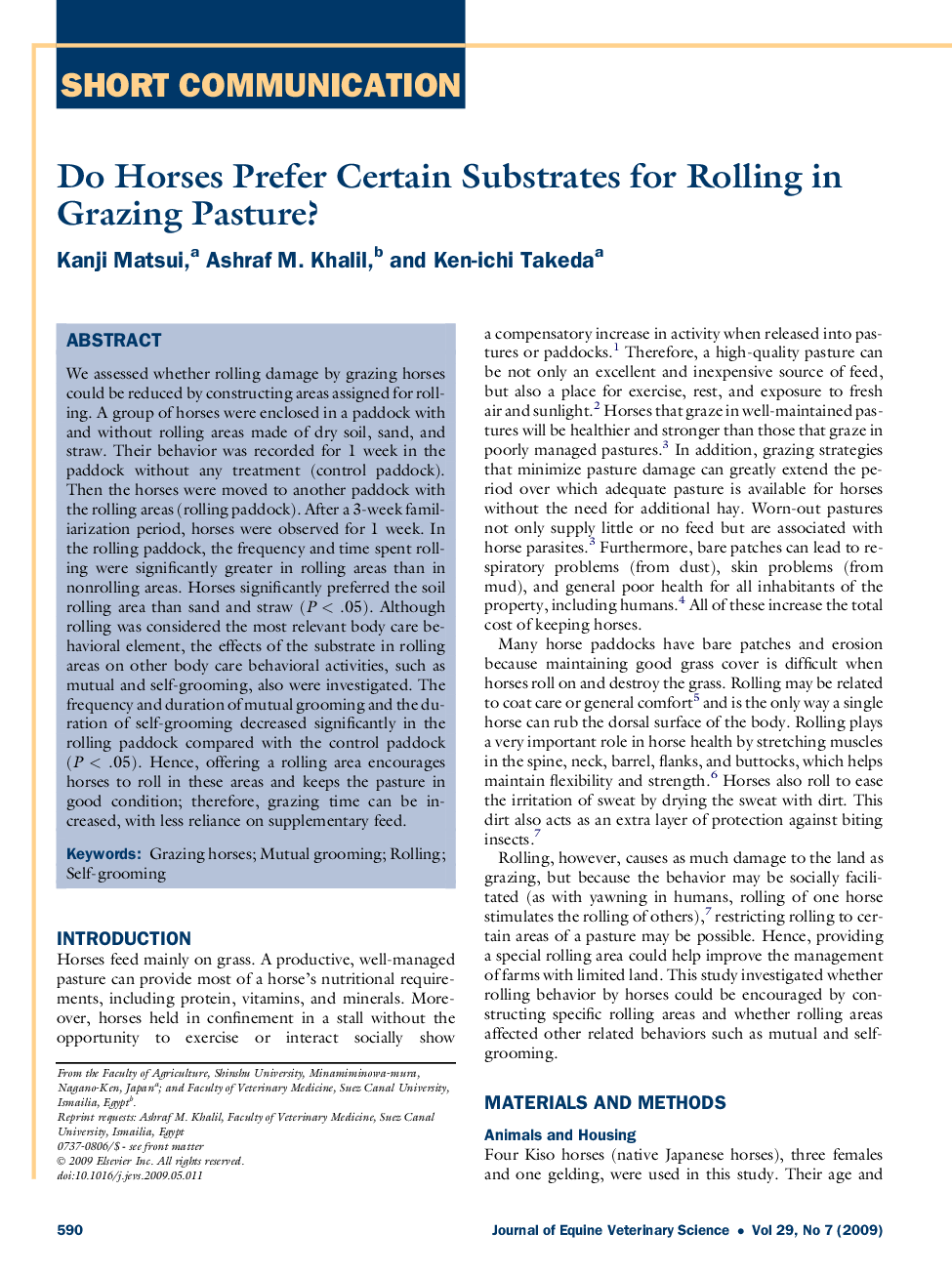| Article ID | Journal | Published Year | Pages | File Type |
|---|---|---|---|---|
| 2396408 | Journal of Equine Veterinary Science | 2009 | 5 Pages |
We assessed whether rolling damage by grazing horses could be reduced by constructing areas assigned for rolling. A group of horses were enclosed in a paddock with and without rolling areas made of dry soil, sand, and straw. Their behavior was recorded for 1 week in the paddock without any treatment (control paddock). Then the horses were moved to another paddock with the rolling areas (rolling paddock). After a 3-week familiarization period, horses were observed for 1 week. In the rolling paddock, the frequency and time spent rolling were significantly greater in rolling areas than in nonrolling areas. Horses significantly preferred the soil rolling area than sand and straw (P < .05). Although rolling was considered the most relevant body care behavioral element, the effects of the substrate in rolling areas on other body care behavioral activities, such as mutual and self-grooming, also were investigated. The frequency and duration of mutual grooming and the duration of self-grooming decreased significantly in the rolling paddock compared with the control paddock (P < .05). Hence, offering a rolling area encourages horses to roll in these areas and keeps the pasture in good condition; therefore, grazing time can be increased, with less reliance on supplementary feed.
